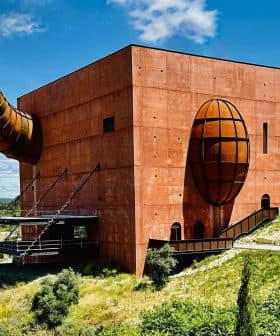 9.1K reads
9.1K readsWorld
For Van Gogh, Olive Trees 'Too Beautiful to Dare Paint'
Vincent Van Gogh found inspiration in olive trees, creating at least eighteen artworks featuring them, most notably in the South of France while he was at the St. Paul de Mausole asylum. Van Gogh’s paintings of olive trees, including Olive Trees in a Mountainous Landscape, symbolized the connection between nature and spirituality, providing therapeutic relief for the artist.

Olive Trees in a Mountainous Landscape, 1889
Olive trees have provided not just a source of nourishment for the body but a source of inspiration for the soul, and for no one more so than Vincent Van Gogh who painted at least eighteen artworks featuring them.
Most of these were produced around Saint Remy de Provence in the South of France. This spectacular part of the world attracted many artists, but in Van Gogh’s case his masterpieces were created while he convalesced at the St. Paul de Mausole asylum. You can visit this former monastery and still functioning clinic along with its beautiful gardens and vistas that so inspired Van Gogh.
Some of his more well-known works include the aptly named Olive Trees in a Mountainous Landscape painted in 1889 as a companion piece to his most celebrated painting of all time, Starry Night. The vibrant colors of Olive Trees with Yellow Sky and Sun express perfectly the late afternoon hues of the Provençal landscape. The instantly recognizable brushwork of Van Gogh with his generous use of paint seems to make his art resonate with a visceral energy that is only discernible when you have the privilege of seeing his paintings in the flesh.
Another series of his paintings denote the olive farmers working the land, showing the connection between nature and man. Because Van Gogh associated the beauty of nature with a spiritual force. He was fascinated by the changing splendor of the scenery and the “venerable, gnarled olive trees.” His attempts to capture this beauty proved therapeutic for Van Gogh, relieving him at least temporarily from his emotional turmoil.
Art historians believe that to Van Gogh the olive tree was something sacred, symbolizing both the divine and “the cycle of life.” This notion was exquisitely described in a letter he wrote to his brother Theo: “The rustle of the olive grove has something very secret in it, and immensely old. It is too beautiful for us to dare to paint it or to be able to imagine it.”



